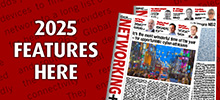04 July 2025

Whether it’s fossil fuels or renewables, the global offshore energy sector is growing. Oil demand is forecast to be 3.2 million barrels per day higher in 2030 than in 2023. Meanwhile, global offshore wind is set to increase from 80GW today to an estimated 212GW by 2030.
Offshore sites involve many stakeholders and face unique operational challenges and regulatory demands. Because of this, the offshore energy sector already has several distinct communication needs. So, as demand increases over the coming years, so too will the complexity of communication between the many stakeholders in the sector.
It is against this backdrop that a UK-based specialist offshore equipment provider needed to streamline communication between hundreds of employees while also enhancing its ability to connect with clients globally. Failing to do so would get in the way of its operations and potential growth. With an eye on future scalability, CallTower created a Unified Communications as a Service (UCaaS) and PSTN solution to help.
Supplying specialised equipment around the world
The UK-based equipment provider delivers specialised offshore equipment to locations around the world, along with asset inspection and maintenance services. Each location and market has unique needs and regulations, and although a mid-market company, it has a presence across Europe, Africa, and Australasia, for effective project delivery. However, to ensure it can effectively communicate with stakeholders across these markets, the equipment provider needed to enhance its telephony capabilities so its team could seamlessly connect with clients and stakeholders wherever they were.
“Offshore energy sites are almost always joint ventures between large organisations with significant amounts of capital invested. This makes stakeholder alignment a mission-critical process involving many players. Organisations like our client’s can’t risk having poor connectivity in an environment like this,” said CallTower CRO William Rubio.
Global operations come with global challenges. Managing teams and operations in eight countries, the equipment provider required a robust communication and collaboration solution to support its own geographically dispersed workforce, too. It needed to streamline its internal communications and collaboration between hundreds of employees across multiple time zones.
On top of this, aware of the growth of the sector, the equipment provider wanted a solution that was scalable. It was important that any solution could meet future growth in demand and changing business needs.
“The way the world sources energy is changing, and companies in the energy sector need communications systems that can keep up,” said Rubio.
Combining technologies in a single communication platform

To meet the equipment provider’s external and internal communication needs, CallTower helped create and deploy a solution combining Microsoft Teams and high-quality PSTN calling integration. The Teams solution was provisioned using E5 licenses.
This combination of technologies is housed in a single, unified communications platform, designed for operational efficiency, ease of use and future scalability. It also features the ability to add mobile eSIMs to allow team members to call colleagues, clients or partners when they’re away from their desk.
The Microsoft Teams deployment means the equipment provider’s workforce can now collaborate through voice, video, and messaging from within a single, familiar tool. Teams in Europe, Africa, and Australasia can communicate more easily, fostering improved connectivity across time zones. Thanks to the PSTN integration, calling global stakeholders and clients is seamless and effortless as well.
By combining Teams and PSTN calling into a native-like application, there’s also no need for multiple communications tools, reducing the time and risk of swapping between, and moving data between, applications. The unified platform also simplifies the equipment provider’s setup, making the platform easier to for IT teams to use and manage.
Mobile eSIM capabilities equip the provider’s communications infrastructure to support evolving business needs. As new team members join, the platform can be easily scaled, and it supports bring-your-own-device (BYOD) for those who need to work on location or offshore.
“Though the equipment provider’s communication needs became more complex, its communication systems were simplified. Its employees can better collaborate and manage stakeholder relations, which we know is of growing importance in the offshore energy sector,” said Rubio. “Global energy demand is set to grow 11-18% between now and 2050. Our solution allows the equipment provider to grow and more easily adapt to new scenarios and market requirements. Organisations that can’t adapt are at risk of being left behind.”








